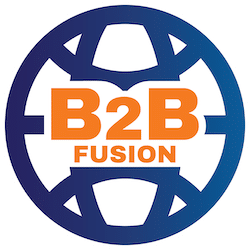Every company should be evaluating new mergers and acquisitions for new growth and routes to market. We have encountered our clients having multiple products to grow faster – but Marketing is left holding the branding bag and systems bag when this occurs. This leads to this week’s question:
What key factors and decision-making frameworks should a B2B SaaS company consider when evaluating the consolidation of multiple acquired global brands onto a single platform, particularly when weighing options between full brand unification versus a dual-brand strategy (enterprise/self-serve)? Please provide specific examples of successful consolidation approaches and potential pitfalls to avoid.
Here is a 7 step framework for this situation:
- Conduct a brand equity assessment:
Even without existing data, you can quickly gather insights on brand strength and perception.
Consider:
– Surveying customers and prospects across regions
– Analyzing website traffic, search volume, and social media engagement for each brand
– Reviewing sales win rates and deal sizes associated with different brands
– Interviewing sales teams about brand perception in their markets
- Evaluate technical considerations:
– Assess the effort required to migrate customers to a single platform
– Consider any regulatory or compliance issues with consolidation
– Review contracts to understand any limitations on rebranding
- Analyze market positioning:
– Map out how each brand is positioned in its market
– Identify any unique strengths or target segments for individual brands
– Consider if a single global brand can effectively serve all markets or if a two-brand strategy (enterprise/self-serve) makes more sense
- Financial impact assessment:
– Project costs of rebranding and replatforming
– Estimate potential revenue impact (positive or negative) of consolidation
– Consider efficiency gains from unified marketing and sales efforts
- Stakeholder input:
– Gather feedback from leadership across regions and divisions
– Consult with sales teams on potential customer reaction
– Consider employee sentiment, especially for acquired companies
- Develop scenarios:
Create 2-3 options (e.g., single global brand, two-brand strategy, maintain status quo) and evaluate pros/cons of each.
- Phased approach:
Consider a gradual transition, perhaps starting with back-end consolidation while maintaining separate brands initially. This allows for testing and adjustment.
Remember, the decision isn’t just about efficiency – it’s about maximizing long-term value and growth potential. A single global brand can offer simplicity and unified messaging, but may sacrifice nuanced positioning in specific markets. A two-brand strategy could allow for targeted messaging but requires more resources to maintain.
What other steps have you found helpful when going through an industry consolidation?
